Long-Range with Springfield Rifles, Through the Ages
November 25th, 2021
7 minute read
The Springfield Armory name carries with it a long and storied history. The original Springfield Armory was founded in the late 1770’s to house the weapons and ammunition of America’s fledgling army during the Revolutionary War.
It would go on to serve the country during the Civil War and both World Wars, to name just a few. Over the arsenal’s long life, it has been involved in the production of several legendary American rifles. The 1873 Springfield Trapdoor, the Springfield M1903, The M1 Garand and the M14 are all rifles that served major roles for the United States in wars and conflicts over the years. The tradition of the M14 has been carried on by today’s Springfield Armory in Geneseo, Illinois, with its M1A semi-auto rifle.
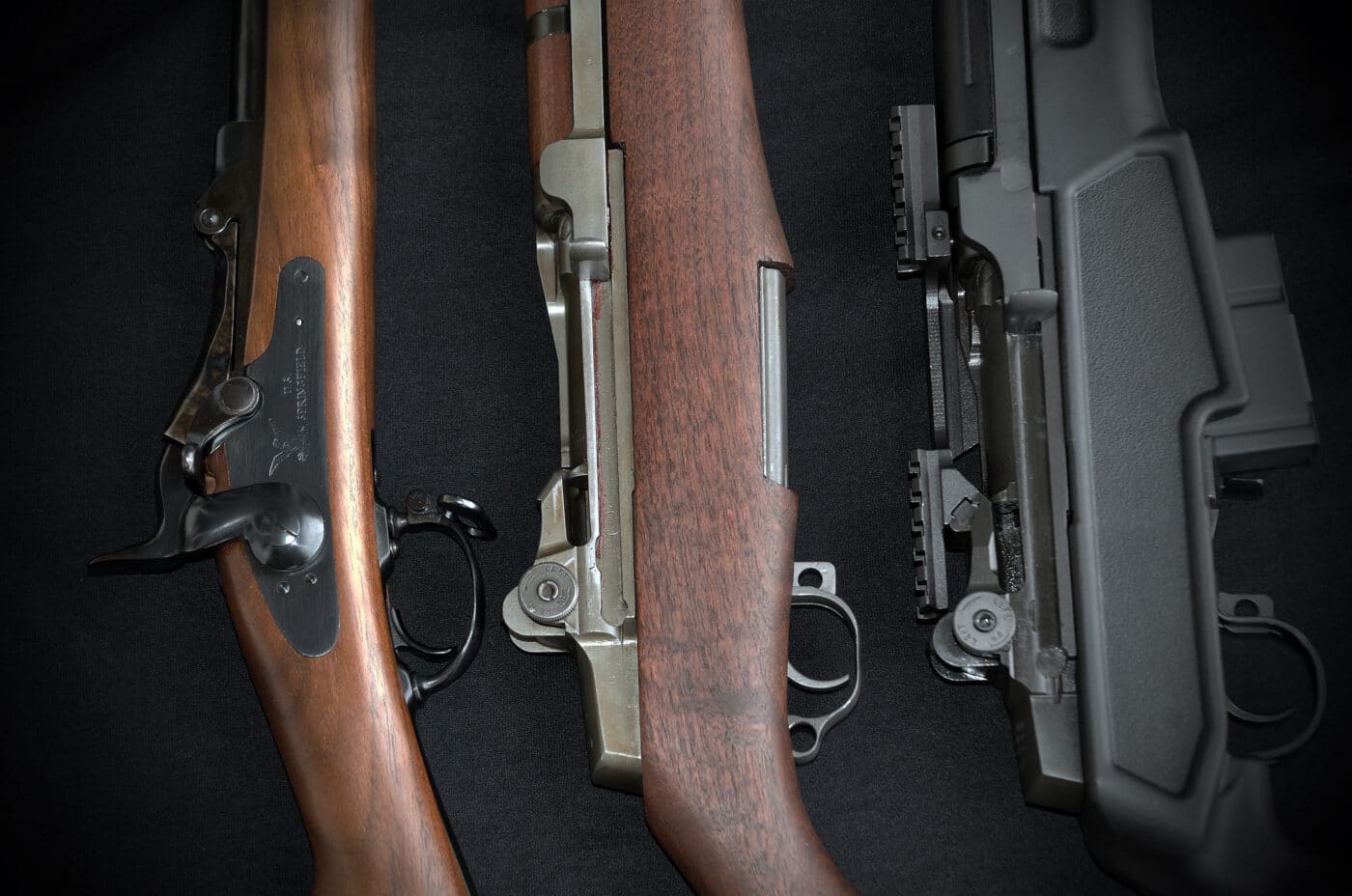
During a trip to visit my good friend and fellow writer Frank Melloni at a shooting club in Pennsylvania, I had the pleasure of getting to experience long-range marksmanship with each of these historic rifles. Over the course of a day, in chronological order, I walked these rifles as far out on the 1,040-yard range as I could. This was a great way to learn about each of the rifles, and to see how their designs reflected the eras from which they came.
Starting Back
I started with a reproduction 1873 Trapdoor in .45/70. This rifle is about as close to a musket as it gets while still making use of smokeless cartridges. In fact, to someone unfamiliar with trapdoor conversion rifles, it’s entirely understandable how they might mistake it for a musket. The gun sports the classic look of that era, with a hammer on the side and a whopping 32.5” barrel.
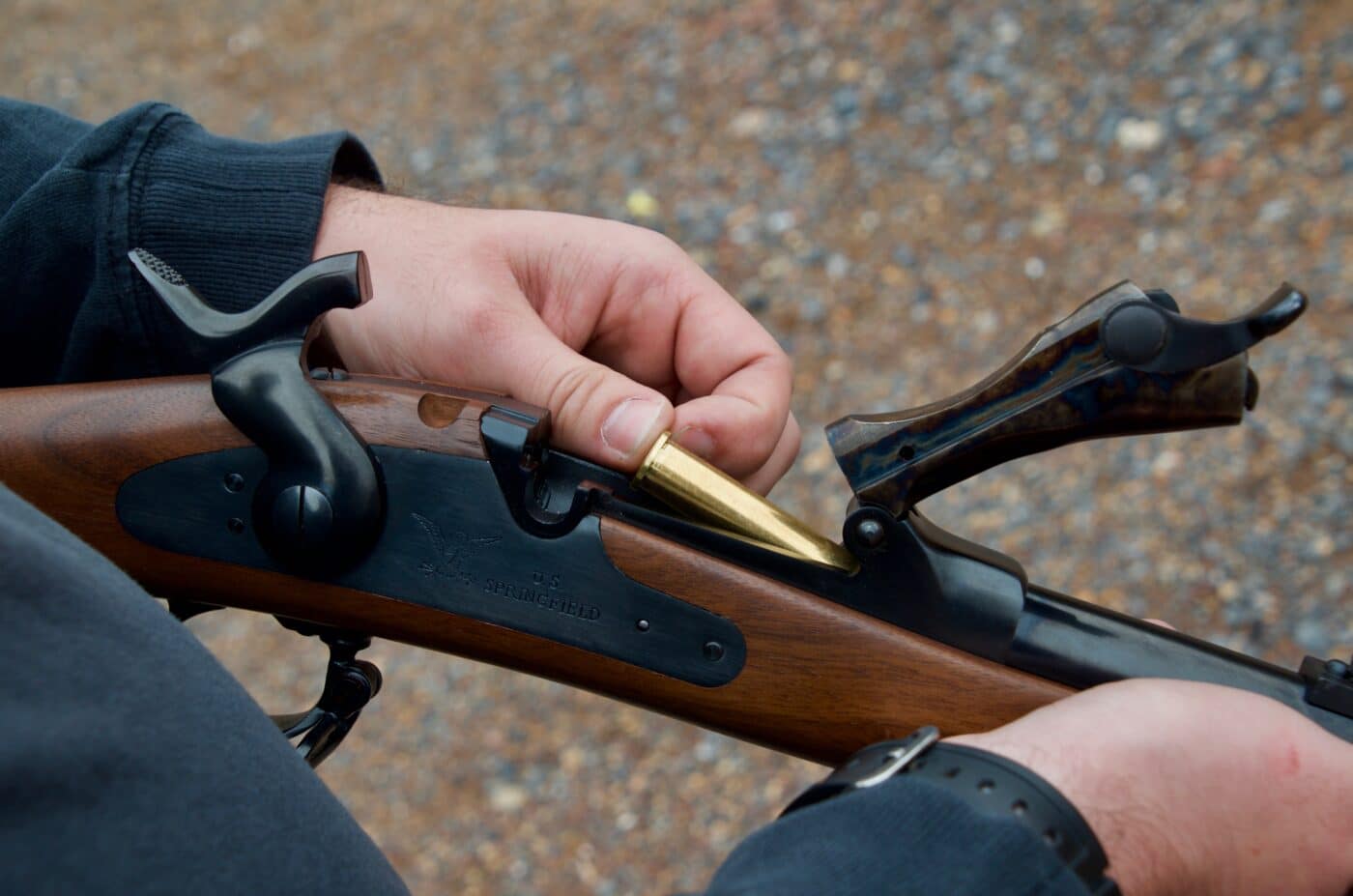
I began with a preliminary zero on a small paper IPSC target at 100 yards. I used only the folded down v-notch rear sight to make a torso hit. The sight picture in this position is not ideal as there is a lot going on between the front and rear sights of the gun. Despite the busy nature of the sights in the flipped-down position, I was able to hit a steel gong at 100 yards several times.
I then flipped up the adjustable sight to make the transition out to 200 yards. With the sight set all the way at the bottom of the “ladder”, it took some slight Kentucky windage to begin landing shots at the 200. The 405-gr. Black Hills flat-point lead rounds we were launching absolutely rocked the steel target at that distance.
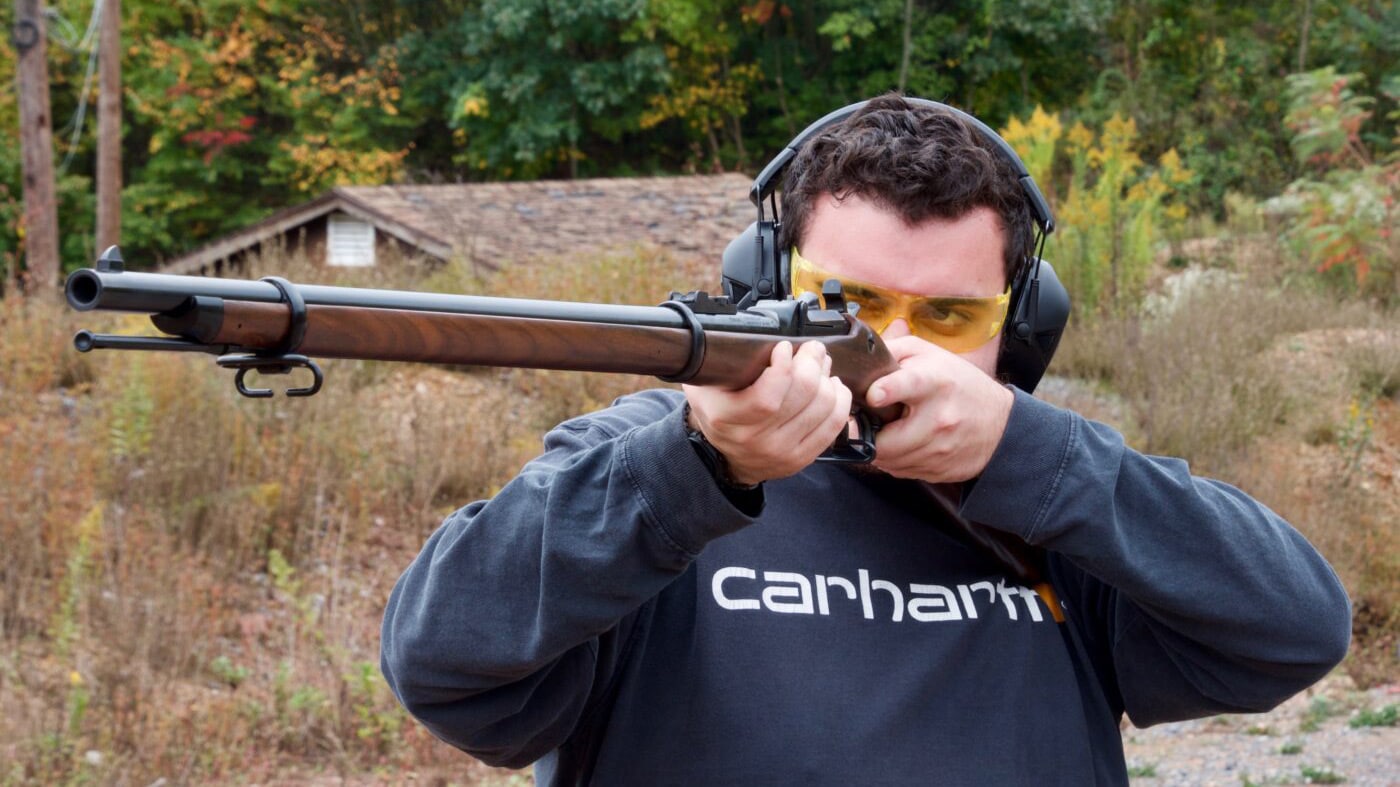
Now it was time to adjust the sight upwards. Unfortunately, on the Trapdoor model I own, this is done by moving the sliding elevation notch and locking it in by tightening a small flathead screw on the front of the sight. The sliding elevation notch does not hold its position when moved up, so the shooter has to be very careful it doesn’t shift during adjustment, an issue I experienced a couple of times. Making a precise adjustment on the 1873’s sights was somewhat difficult. Several shots at 500 yards came very close to the target but didn’t hit. I believe that the gun is capable of better accuracy out to greater distance, but the sights will have to change in order to get there.
The Great War Rifle
Next, I shot the Springfield M1903 rifle in 30-06, America’s rifle from the World War I era and beyond. This gun surprised me. Picking it up I immediately noticed its interesting rear sight. It offers a simple notch in the “down” position and peephole and elevation adjustable notch sights in the “up” position.
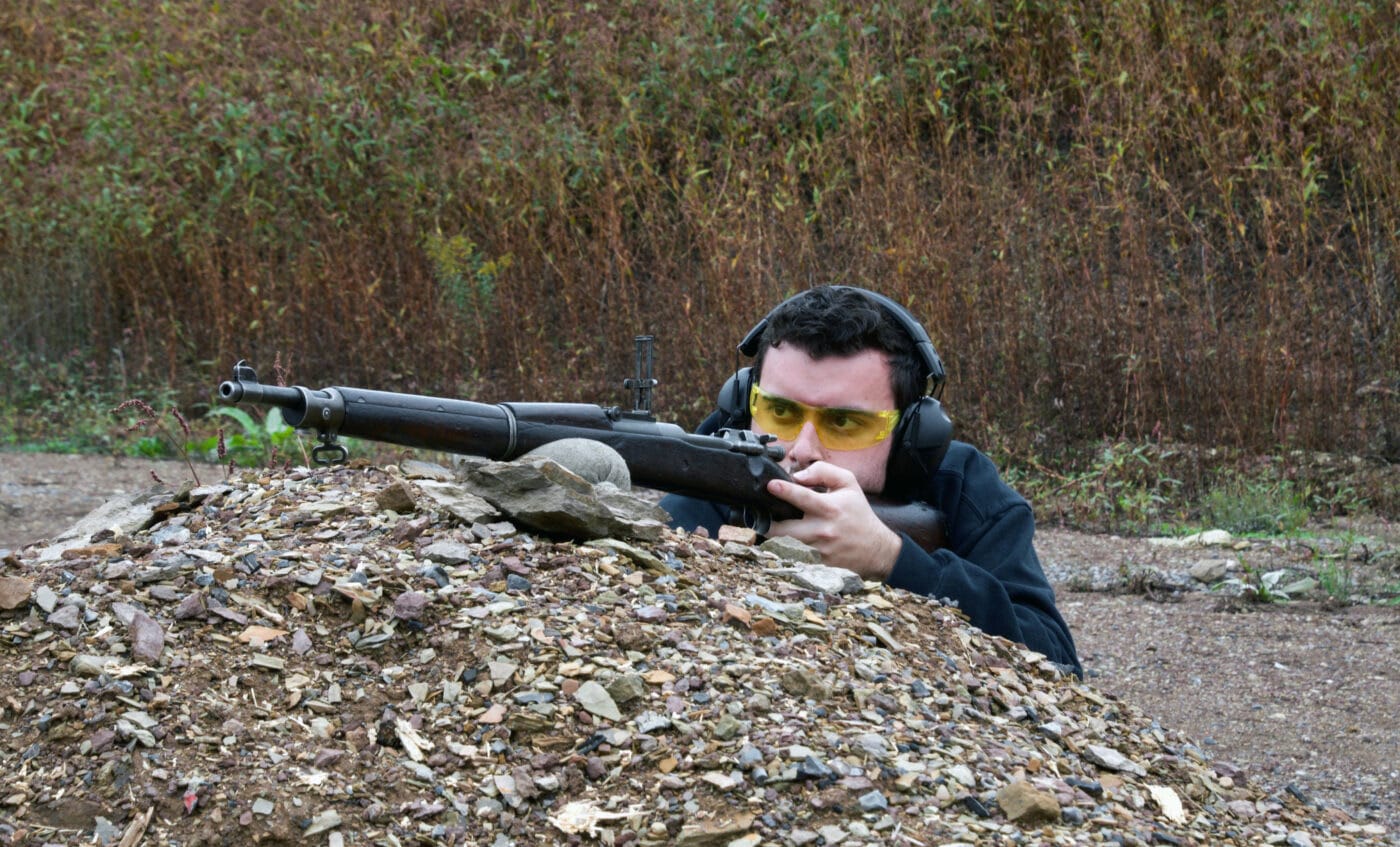
I found that the adjustable notch sight offered good target visibility, even at great range. After firing it, I can only describe it as surgical precision. Shots from 200 all the way out to 1,040 yards were made easy by the fantastic sight system. Delivering my first iron sight hit at 1,040 yards is a feeling I will never forget. The rifle’s ability to shoot predictably at this sort of distance sets it apart from other rifles of its era. Its five-round capacity is a big improvement over the one-round capacity of the Trapdoor, but is eclipsed by the next two rifles in line.
An Icon
Now it was time to fire the M1 Garand. I was not sure what to expect when I sat down at the bench with my M1. I had only ever fired it standing and at targets within 100 yards. Frank filled me in on the genius of the Garand’s rear sight. For every click on the elevation or windage dials, the point of impact will shift approximately one inch for every 100 yards.
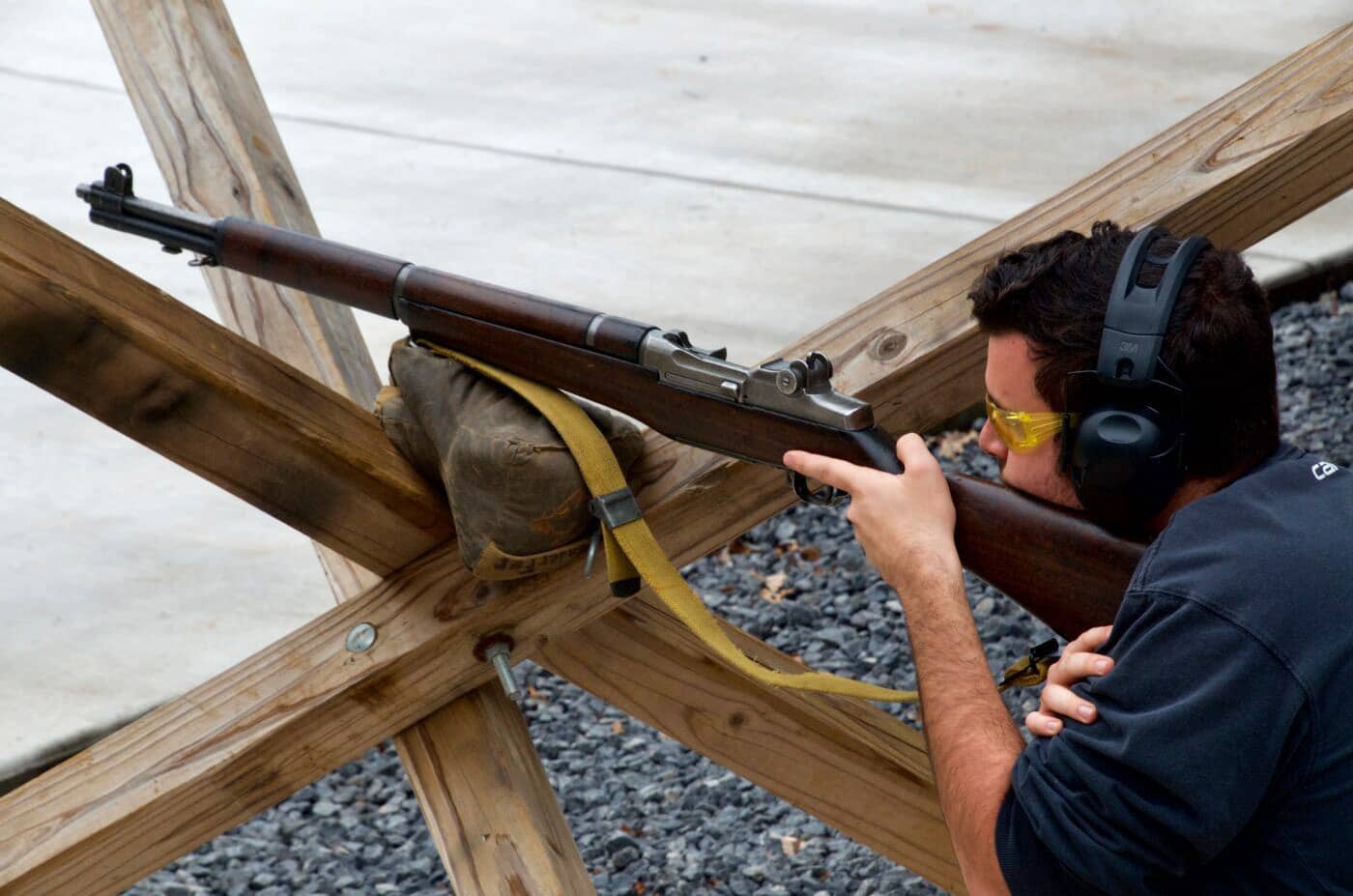
Using this system it was easy to make hits at most distances on the range without having to use any hold-overs or Kentucky windage. Making repeated shots on a steel IPSC target at 500 yards was not too difficult if the shooter did their part. Once I reached 1,040 yards with it, I was able to hit several times with minor point of aim adjustments using surplus Greek HXP ammunition.
After the performance I got out of my Garand, I’m inclined to say it has one of the better sighting systems I’ve ever used for long-distance shooting. Its eight-round capacity also meant I could continue to shoot and adjust for longer durations without having to reset. The 125-gr. .30-06 FMJ ammunition from Lapua proved to be both safe to shoot in the Garand and excellent at distances out to 500 yards despite the low projectile weight.
A Continuing Tradition
Lastly, I shot the Springfield Armory M1A. This platform, a semi-auto sibling of the U.S. Military’s M14 rifle, is one of the modern Springfield Armory’s claims to fame. The rifle I had out on the line was the Loaded Precision model. This set-up would have a serious impact on differentiating the M1A from its predecessor, the M1 Garand, during shooting. The Loaded Precision is exactly what it sounds like — a precision model of the M1A with a very advanced adjustable stock system.
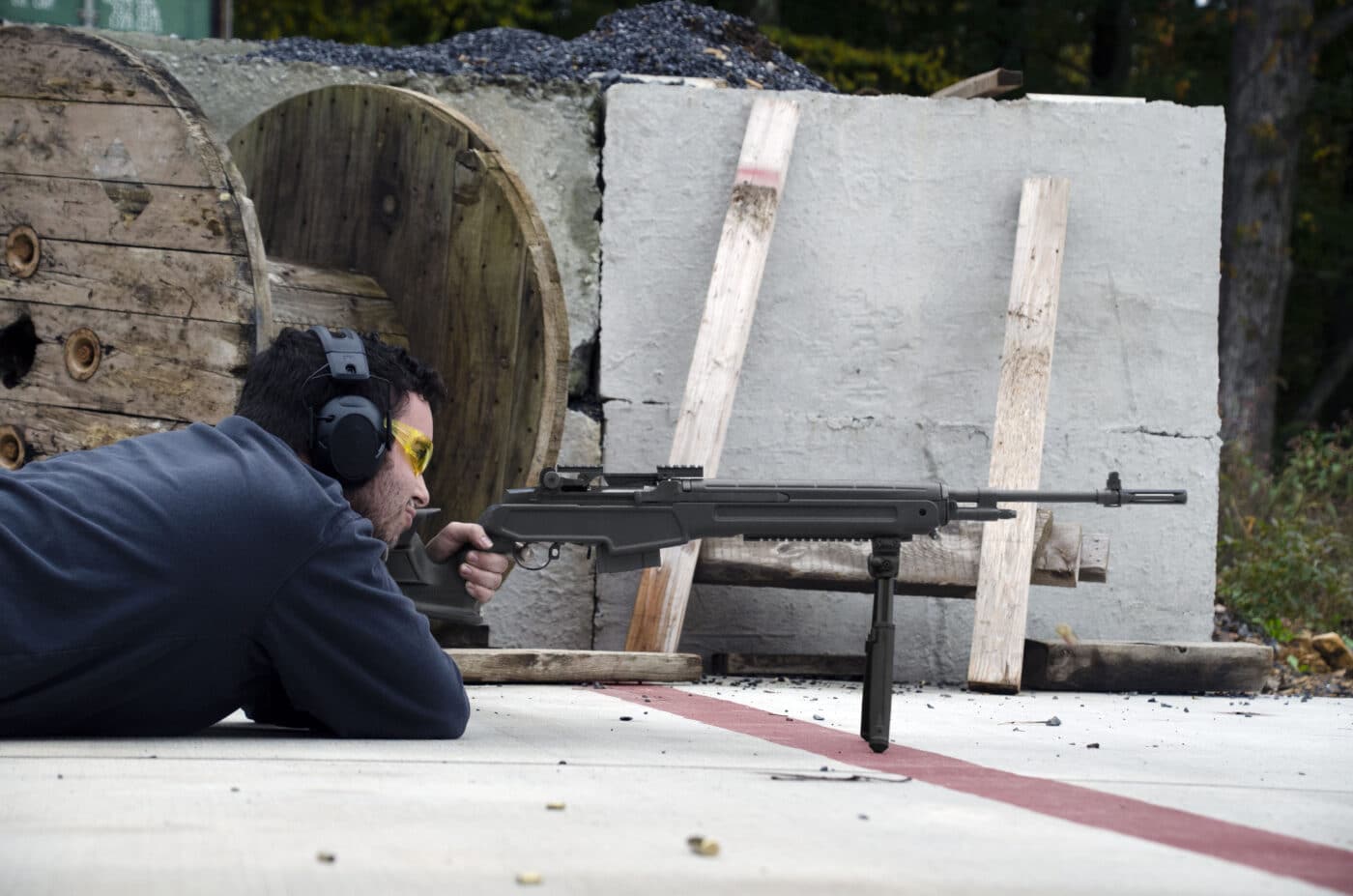
Another factor that sets the M1A apart from the Garand in long-range shooting is its .308 chambering. While the .30-06 is a perfectly capable long-range cartridge, the .308 allowed me to pick up the tempo, landing follow-up shots at distance with decent speed. The rifle’s 22”, air-gauged, medium-weight national match barrel proved extremely accurate.
To allow for the most accurate comparison possible between the rifles, I opted to use the M1A’s factory iron sights during my first outing with it. The sights operate very much the same as the Garand’s and offered equally stellar accuracy. The major difference between the two is that my Loaded Precision had the option of quickly and easily attaching a magnified optic via a Springfield Armory scope mount Picatinny rail. The M1A’s detachable box magazines also meant that reloads were quicker and that the overall capacity of rounds was higher during each course of fire.
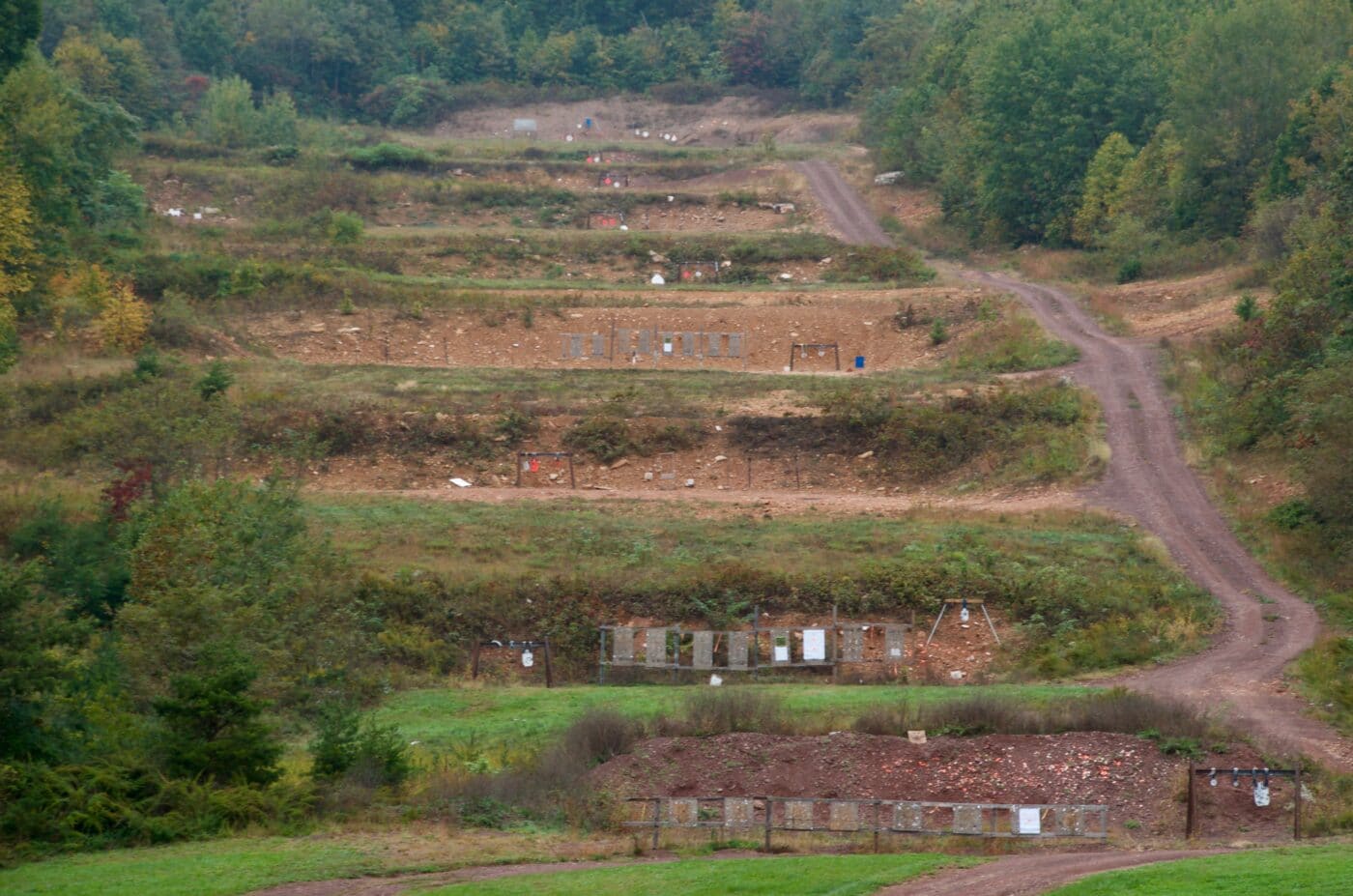
The Loaded Precision has a stock that’s adjustable for both comb and length of pull. Not only does this allow the shooter to find a comfortable setting while shooting with iron sights, but it allows them to find the proper point of eye relief when shooting with a scope. The front rail also proved to be a boon as it allowed me to attach a bipod to more effectively steady the rifle in certain positions.
The M1A performed great on the range. I was able to hit immediately with it starting out at 200 yards. Then, walking it out to each 100-yard increment, I was able to make solid hits with iron sights out to 500 yards from the prone position. Later, while shooting from the bench rest position, I was able to push it out to the farther targets by making adjustments to the sight and using some slight hold-over and Kentucky windage.
Conclusion
It’s truly amazing how much firearms have advanced over the timespan in which these rifles were produced. From 1873 to 2015 (when the Loaded Precision was introduced), over more than 140 years, we’ve gotten advancements in nearly every facet of the rifle. Cartridges, barrel construction, the ability to accessorize and especially sight systems have all changed over time to adapt to the needs of modern shooters and adjust to the changing nature of shooting.
Being able to delve into the original Springfield Armory’s past and compare the long-range shooting experience with that of a rifle produced by Geneseo’s Springfield Armory was genuinely interesting and quite eye-opening. The extreme ranges we were shooting at really helped me wring out the rifles, and I came away impressed by all of them.
Editor’s Note: Please be sure to check out The Armory Life Forum, where you can comment about our daily articles, as well as just talk guns and gear. Click the “Go To Forum Thread” link below to jump in and discuss this article and much more!
Join the Discussion
Featured in this article
Continue Reading
Did you enjoy this article?

 260
260







